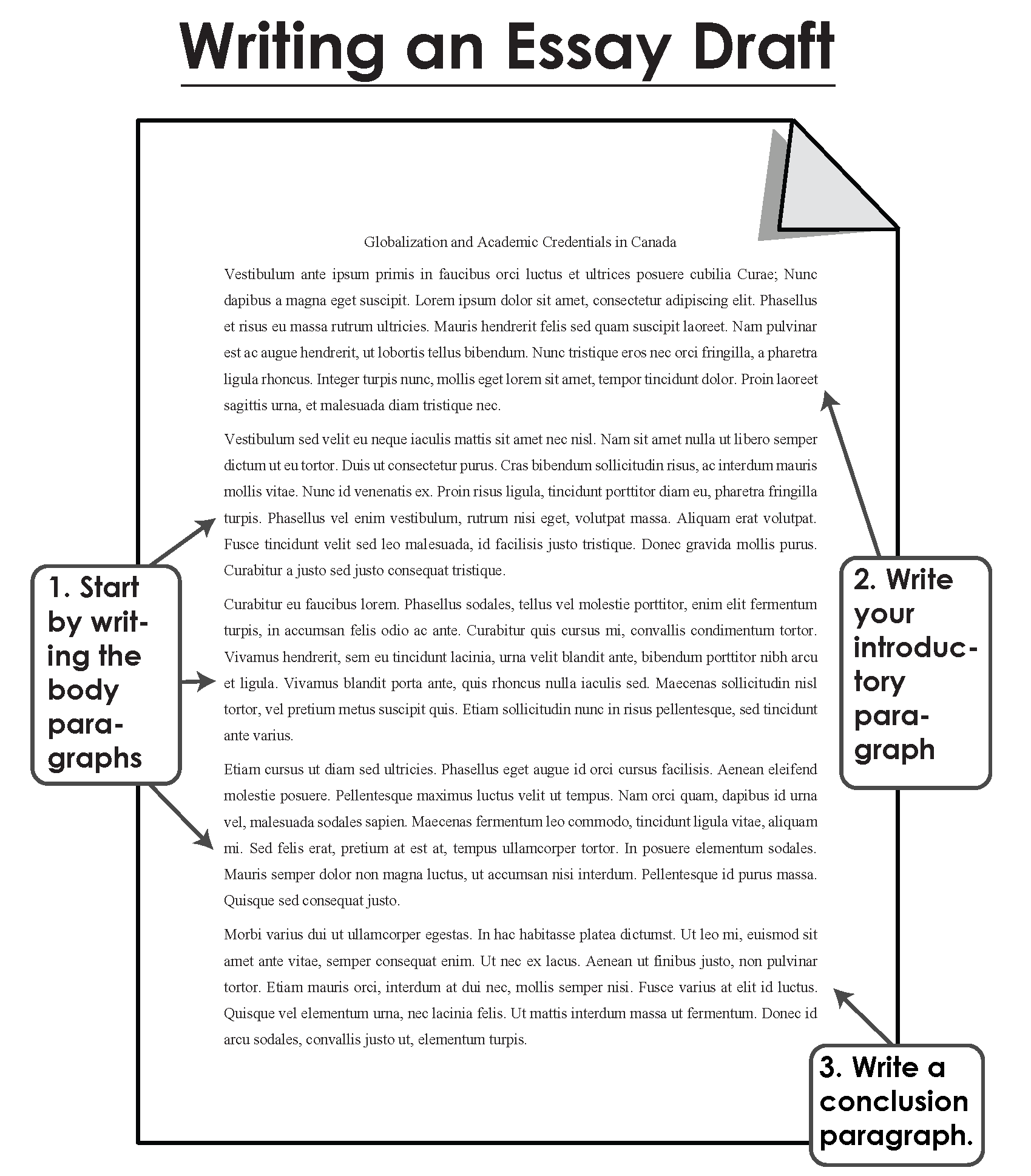30 Write Your First Draft
Your thesis statement and outline will guide you through the rest of the writing process.
Tips for Writing Your First Draft
Step 1: Write the body paragraphs first
Although the introduction is the first thing your reader will see, it is sometimes easier to write an introduction once you know how your paper develops. Use an outline to help you organize your points and ideas ahead of time.
Do
- Make sure each paragraph supports the main idea (thesis statement) of your paper.
- Include only one main idea in each paragraph. You should use a new paragraph for every new piece of information you want to discuss.
- Begin each paragraph with a topic sentence.
- Include evidence: facts, details, examples, stories, numbers, and any other information that improves your argument. Be sure to cite any sources that you use.
- Introduce different paragraphs with words like First, Next, In addition, Moreover, Finally.
Don’t
- Include paragraphs that have no connection to your main idea (thesis statement).
- Have more than one main idea in each paragraph.
- Make “sweeping statements” (generalizations). Do not make an extreme statement without giving details to support it.
Step 2: Write the Introduction
Get your audience’s attention. What’s important or interesting about this topic? What background do your readers need to understand?
Your introduction should also include your thesis and an overview of the main points you’ll be discussing in your paper. Your introduction tells your reader what you’re going to cover in the essay.
Do
- Make it clear to the reader what your paper is about.
- Give a strong thesis statement. What do you want to say about the topic?
- Start with something that “grabs” the reader.
- Give any necessary background and suggest why this topic is important.
Don’t
- Make it too long. The introduction should be no more than 15−20% of your essay.
- Say, “This essay is about …” What do you want to say about it?
Step 3: Write the conclusion
The conclusion signals the end of your paper and tells your reader what you have covered in your paper. You should restate your thesis, summarize the most important points, and demonstrate that you’ve proven your thesis.
Do
- Summarize your key points.
- Make recommendations, suggestions, and/or predictions. What should happen next?
- Start with a phrase like “In conclusion”, … or “To conclude”, … or “To sum up”, …
Don’t
- Make it too long. Aim for no more than 15% of your essay.
- Add new information or arguments at this point.
Remember: You can book an appointment with the NSCC Writing Centre for help with writing your paper or assignment.



Feedback/Errata